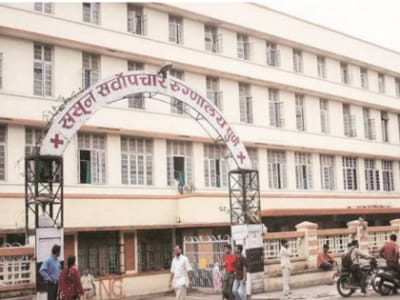Pune: Sassoon Hospital Surgeons Reattach Youth’s Severed Hand in a Seven-Hour Marathon Surgery

Pune: Plot Near Sassoon For New Cancer Hospital, Mushrif Confirms Acquisition
The incident occurred on 23rd May in Baramati when the young man’s hand was amputated while operating a dough kneading machine. The severity and grave condition of the injury necessitated immediate and specialised medical intervention.
11th June 2024
By Ishika Kumar
Pune: In a trailblazing achievement, the Department of Plastic, Reconstructive, and Aesthetic Surgery at Sassoon General Hospital in Pune successfully reattached the right hand of a 22-year-old man after it was severed at the forearm.
This complex procedure spanned over seven hours, showcasing the advanced medical capabilities and collaborative efforts at the hospital.
The incident occurred on 23rd May in Baramati when the young man’s hand was amputated while operating a dough kneading machine. The severity and grave condition of the injury necessitated immediate and specialised medical intervention.
Initially, the patient was taken to the Government Medical College in Baramati but was later transferred to the Sassoon General Hospital due to the intricate nature of the required surgery.
A Multi-Department Collaboration
The successful replantation was a result of coordinated efforts across multiple departments, including Plastic Surgery, Orthopedic Surgery, Anesthesia and the Trauma Intensive Care Unit (TICU).
Dr Ankur Karanjkar, Assistant Professor in the Department of Plastic Surgery, led the surgical team, which included Dr Piyush Bamnodkar, Dr Aditya Marathe, Dr Ranjit Patil, Dr Kaushik Das, Dr Pratik Pal and Dr Sujit Kshirsagar.
The team operated under the guidance of Dr. Parag Sahasrabudhe, Professor and Head of the Plastic Surgery Department, and Dr. Nikhil Panse, Professor of Plastic Surgery.
The Complex Nature of the Injury
Dr Chandrakant Mhaske, Dean of the B J Government Medical College and Sassoon General Hospital, described the injury as an avulsion type. This means the muscles of the forearm were torn from their origin, and nerves were damaged from the armpit.
Such injuries are particularly challenging due to the extensive damage at various levels in both the amputated and remaining body parts.
A critical factor complicating the procedure was the delay of six hours between the injury and the start of surgery, which significantly decreased the likelihood of a successful reattachment. This delay also posed a high risk of ischemia, where a prolonged lack of blood flow can render the tissue nonviable. Additionally, reperfusion injury, which occurs when blood supply returns to the tissue, threatens to release toxins into the bloodstream, potentially damaging the kidneys, liver and other organs.
Innovative Surgical Techniques
Despite these daunting odds, the surgical team utilised cutting-edge techniques to perform the replantation. The patient underwent a specialised form of anaesthesia using ultrasound-guided nerve blocks, which allowed him to remain awake but without sensation in his right upper limb.
This innovative approach minimised the risks associated with general anaesthesia and enabled surgeons to work with precision.
The intricate procedure involved meticulously reconnecting the bones of the forearm (radius and ulna) using metal plates. Additionally, arteries, veins, nerves and muscles were reattached with microscopic precision.
The patient required four units of blood and two units of frozen plasma during the surgery to manage blood loss and maintain stability.
Post-Surgery Recovery and Care
Following the surgery, the patient was closely monitored in the Trauma ICU for three days to ensure no complications arose and to manage any potential reperfusion injuries. The post-operative care included daily dressings and antibiotic treatment to prevent infections and promote healing.
Dr Sahasrabudhe talked about the importance of the multidisciplinary team effort in the patient’s recovery. The success of the replantation surgery was attributed to the seamless collaboration between the surgical team, anaesthetists, intensivists and nursing staff.
Ongoing Recuperation and Future Procedures
Two weeks post-surgery, the patient’s reattached hand has shown promising signs of survival and recovery. Continuous and daily medical attention is being provided to enhance the functionality of the hand.
Plans are already in place for future procedures to further improve the patient’s hand movement and strength.
This remarkable surgery is the epitome of the exceptional skills and dedication of the medical professionals at Sassoon General Hospital. It reflects their relentless efforts in pushing the boundaries of medical science and providing life-changing treatments to patients, regardless of the complexity of their cases.
The successful reattachment of the youth’s hand not only restores his physical abilities but also offers him renewed hope for the future.









